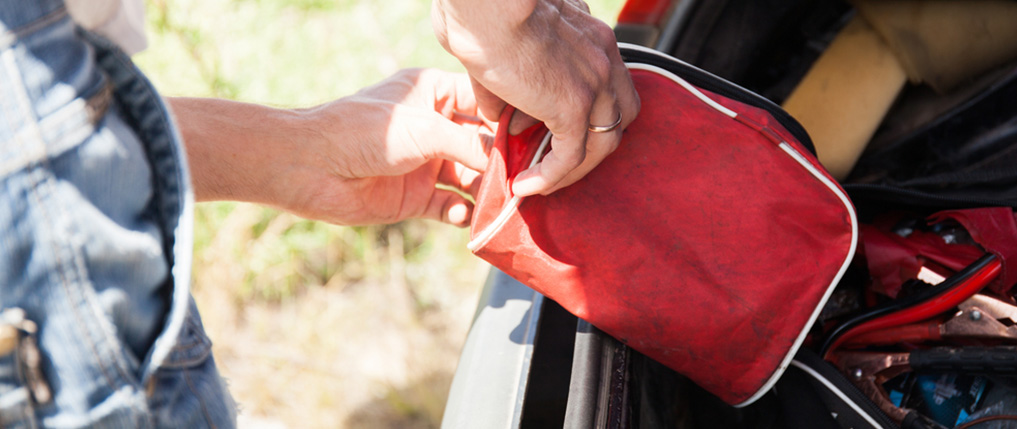What to Put in a Car Emergency Kit
June 5, 2020

Have you ever stopped to ask yourself whether you’d be safe in the event of an automotive emergency? Unfortunately, it’s not uncommon for cars to break down and require a tow, potentially leaving you in a vulnerable situation on the side of the road. In fact, AAA reports that it fields over 30 million roadside assistance requests each year, with the most calls involving battery failures, flat tires and keys locked inside the car.
Here’s what to pack in your car emergency kit to ensure that you’re prepared for whatever may come your way.
1. A Reliable Light Source
There are two important sources of light you need to keep in your car at all times: a tactical flashlight and a headlamp. Choose a long-lasting LED flashlight and pack spare batteries to ensure that you have a reliable light when needed. A headlamp is useful for making emergency repairs, including changing flat tires and recharging batteries, at night or when lighting is low.
2. Water
In survival, there’s something known as the rule of threes. You can go three minutes without air, three hours without shelter, three days without water and three weeks without food. Therefore, it’s important to have a reliable source of water in your car at all times should your emergency scenario turn dire. Keep a stainless steel water bottle in your kit and periodically refill it with fresh water.
3. An Emergency Blanket and Poncho
To ensure that you have proper shelter and protection, be sure your emergency kit includes a warm, water-resistant blanket. A disposable plastic poncho is also an essential because it takes up very little space but provides you with protection so you stay warm and dry if the weather turns bad.
4. Basic Replacement Parts and Tools
You can’t keep the entire mechanic’s garage in your trunk at all times, but you can store some commonly used tools should an emergency arise. Just be sure you know how to use them ,or also keep an instruction manual tucked somewhere inside your kit.
- A spare tire that has recently been inspected for signs of air loss and damage.
- Jumper cables that are at least 20 feet long and work in the cold.
- Work gloves for changing tires, refilling oil, etc.
- A tow rope, bungee cord, tape and zip-ties for emergency rigging.
- A tire repair kit with a tire pressure gauge, tire sealant and an inflator.
- A basic toolkit with screwdrivers, a wrench, pliers and a hammer.

5. First-Aid Kit
If you should suffer an injury or become ill while you’re waiting for help or repairing your car yourself, you’ll be glad you kept a first-aid kit in the trunk. Buy a pre-made one or create your own. Just be sure it has the essentials — bandages, gauze, antiseptic cream, bur cream and antibacterial wipes. You may also want to keep an identification card inside in case you need medical attention.
6. Safety Flares
Highway safety flares beat out any other kind of signaling device because not only can they indicate distress, but they can also provide an emergency light source and heat in the event of an emergency. With that being said, having some reflective orange triangles and other signaling devices on hand can be useful in alerting other drivers that you’re in or near your vehicle.

Store Your Kit in a Pelican Case
When you’re done gathering all the items for your DIY car emergency kit, make sure you choose a durable case for storage. Pelican makes the best watertight, dustproof, crushproof cases to keep all your emergency gear dry, clean, safe and well-organized. These cases will also help prevent any damage that could occur from constant movement in the trunk. Being smart not only about what you pack but also how you pack can make all the difference when a situation turns bad.

SIGN UP FOR EXCLUSIVE OFFERS
Sign up for our newsletter and get exclusive access to new product launches, special offers and much more.
RELATED BLOGS














